TGO Challenge 2022 - Trip Report
Posted by Andy Neil on Jun 23, 2022
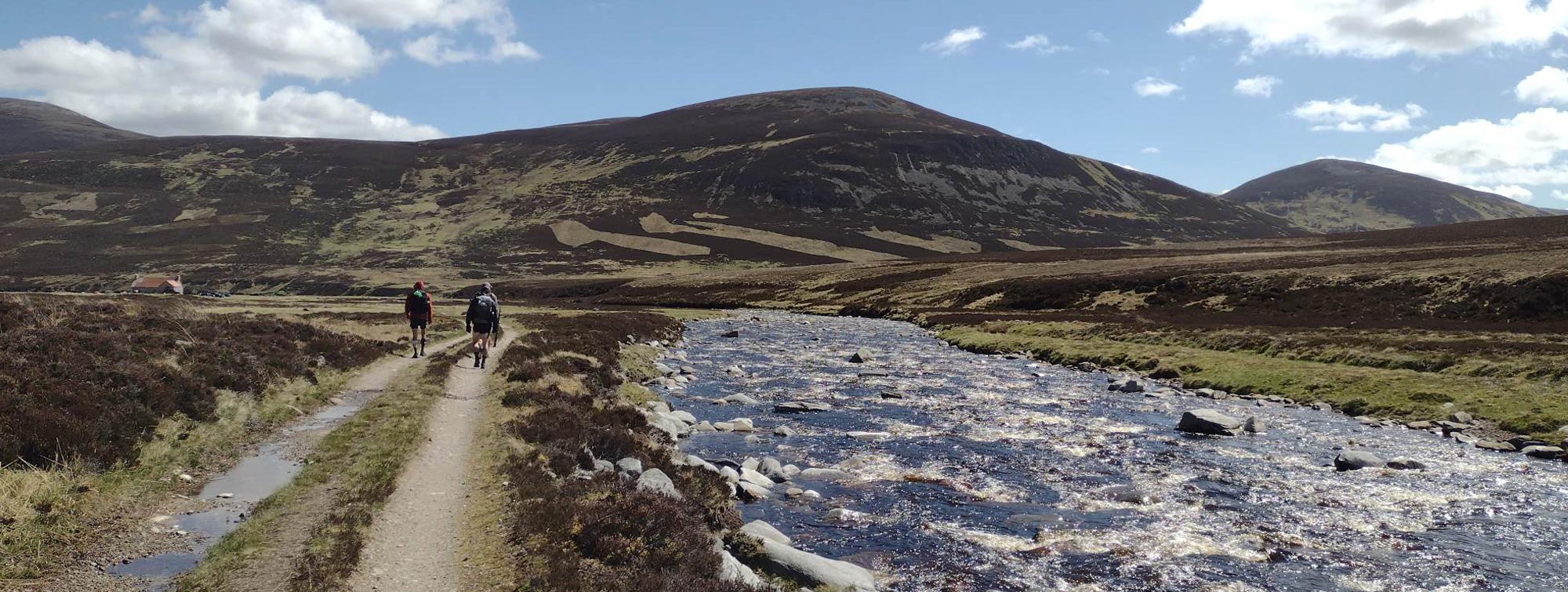
Day 1 Inverie to Kinlock Hourn: 15 miles
The Great Outdoor Challenge, or the TGO, as everyone affectionately abbreviates it, is, for the uninitiated, as I was less than six months ago, a coast-to-coast crossing of Scotland like no other. It has no set route and no fixed start or end point. All 400 challengers start within a set time frame, in this year's case over 5 days, so you are guaranteed to meet fellow TGO’ers along the way. Each “contestant”, either solo, as I was, or in a group of up to 4, must formulate their route from one of 14 designated start points along the west coast. From Torridon in the north, all the way down to Potavadie, the most southerly start point. Challengers can finish their route anywhere on the east coast between Arbroath in the south, and Fraserburgh up in the north. The many ways you can cross and the many places you can start mean each crossing is almost unique. This is the main reason many come back year after year, in fact, this year, one of the chief route vetters, Graham Brooks, completed his 30th crossing. A feat that has only been accomplished by one other, Bill Robertson, who completed 33 challenges in all, his last at the incredible age of 84. Once you have dipped your feet in the sea you then make your way to Mission Control in Montrose where you officially end your challenge.
The challenge started in 1980 and has been run by several different coordinators throughout the event's life, and is now in the incredibly good hands of Sue Oxley and Ali Ogden. Sue and Ali, as everyone on the challenge refer to them often with a hint of love and admiration in their voice, are known to all challengers. They are your first point of contact, are wonderfully accommodating, and are brilliant company. Together they run the Newtonmore Hostel, which acts as mission control for most of the Challenge until the first few intrepid walkers are about to finish their crossing, then mission control heads to Montrose. Every route must be vetted so that each challenger knows what is in store for them and to make sure your route is safe. A foul weather alternative must also be included with your route, after all, this is Scotland in May and snow can still be covering the peaks, especially in the Cairngorms. This herculean task is a staggering amount of work and is a credit to every vetter, volunteer, and coordinator. I doff my cap to you all.
So, after months of studying my maps, planning one route, crossing bits out, swearing, and crossing more bits out I had my route and, finally, I found myself on the boat to the Knoydart. The Knoydart peninsula is an incredibly remote place. It’s completely cut off from the UK mainland road network, meaning the only way to reach it is by boat or on foot and this chiefly was the reason I planned to start my crossing from here. Inverie, the main settlement in the Knoydart, has a population of around 120 residents and this is where the ferry dropped us off. After the bags had been heaved off the boat and everyone had strapped themselves into their rucksacks, it didn't take long before everyone thinned out, finding their way onto their own route. The literal boat load of people soon thinned out, till I was pretty much on my own.
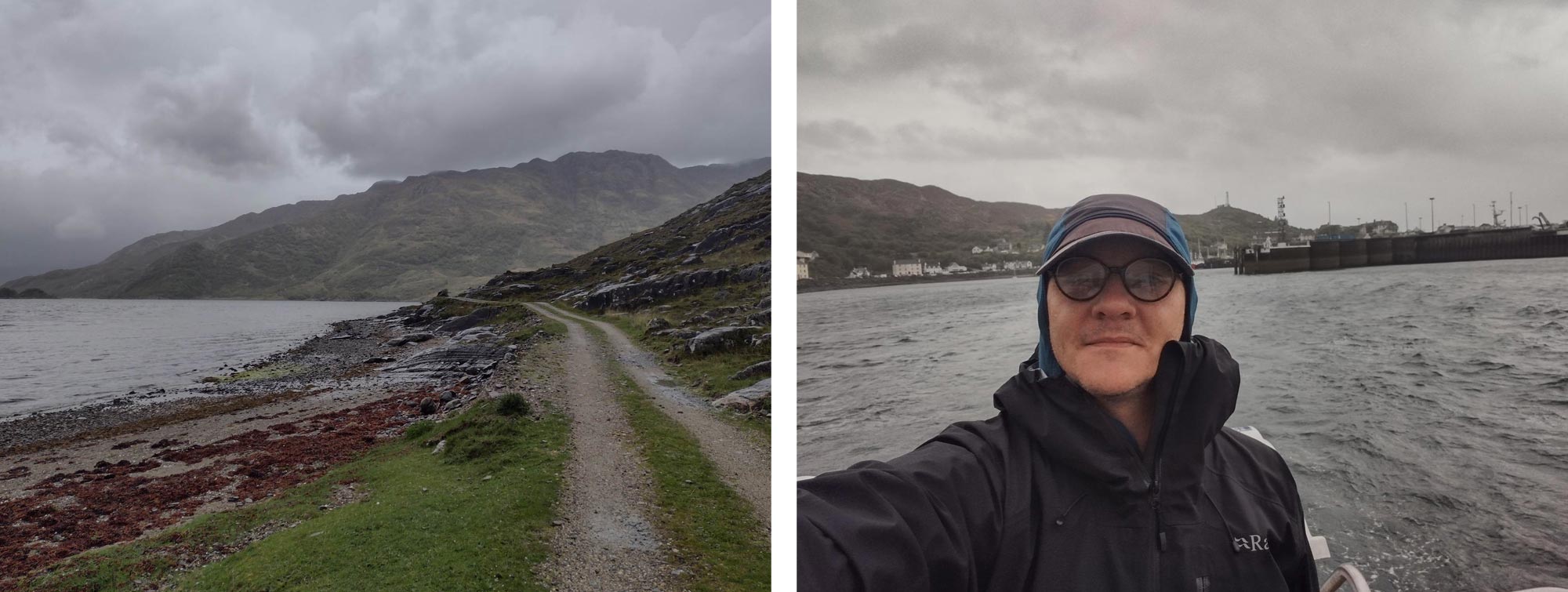
My original plan had been to make for the Barrisdale bothy and make camp for the night. However, I was advised by a few people on the boat that it would be best to press on a few more miles along to Kinlock Horn where I was assured, that most challengers would be heading to camp. Needless to say, I was 1 of only 2 tents there that night, but I'm getting ahead of myself.
As previously stated, it had rained solidly for the 3 days leading up to my arrival in Knoydart and everything was soaked. Every path had now become a tributary, every river was in spay and every patch of grass you didn't first inspect with a prod from your trusted walking pole could easily be a bog of unfathomable depths. I passed several highland cows, one with a calf, so I was careful to not upset them and give them a wide berth. Going was slow and I met a chap who had turned back, though I don't think he was on the TGO. He informed me that the river crossings up ahead were impossible to pass. Faced with either pushing on to see for myself or heading back to Fort William, I pushed on.
The first crossing wasn't so bad, though I did stop and wait for the pair of walkers behind me to catch up before I attempted to cross. We stuck together for the next 4 crossings, safety in numbers and all that. We made our way up Mam Barrisdale with only one of the crossings giving us too much bother. We had to leave the path and descend to find a safe place to cross. I soon found myself at the high point of the day and once again on my own.
The views back along the valley that I had just climbed would, I'm sure, have been fabulous, but the heavy cloud, rain, and mist didn't make for an impressive vista. So, I trudged on and descended to Barrisdale, my original endpoint for the day. It was only 3.30, so after taking advantage of the bothy to get a snack and dry out for a bit, I took heed of the advice the challengers on the boat had given me and set off again.
The rest of my day's hike hugged the banks of Lock Hourn and the path undulated for another 7 or so miles. I passed more Highland cows and some stags, who were not as skittish as I was led to believe, happily grazing and not paying me the slightest bit of attention. The sun eventually even came out for an hour or so but did little to alleviate the incredibly damp conditions. Every path that ascended or descended was a small stream.
I arrived at the campsite a little after 6.30. Only one other tent was pitched and after a quick chat with my neighbours I found out that this part of my route was also on the Cape Wrath Trail and that no other TGO’ers had, as of yet, got to the campsite. These would be the last people I would see for 2 days. I quickly pitched my tent of choice, the Hilleberg Anaris, rehydrated a wilderness stew, and was asleep by 9.
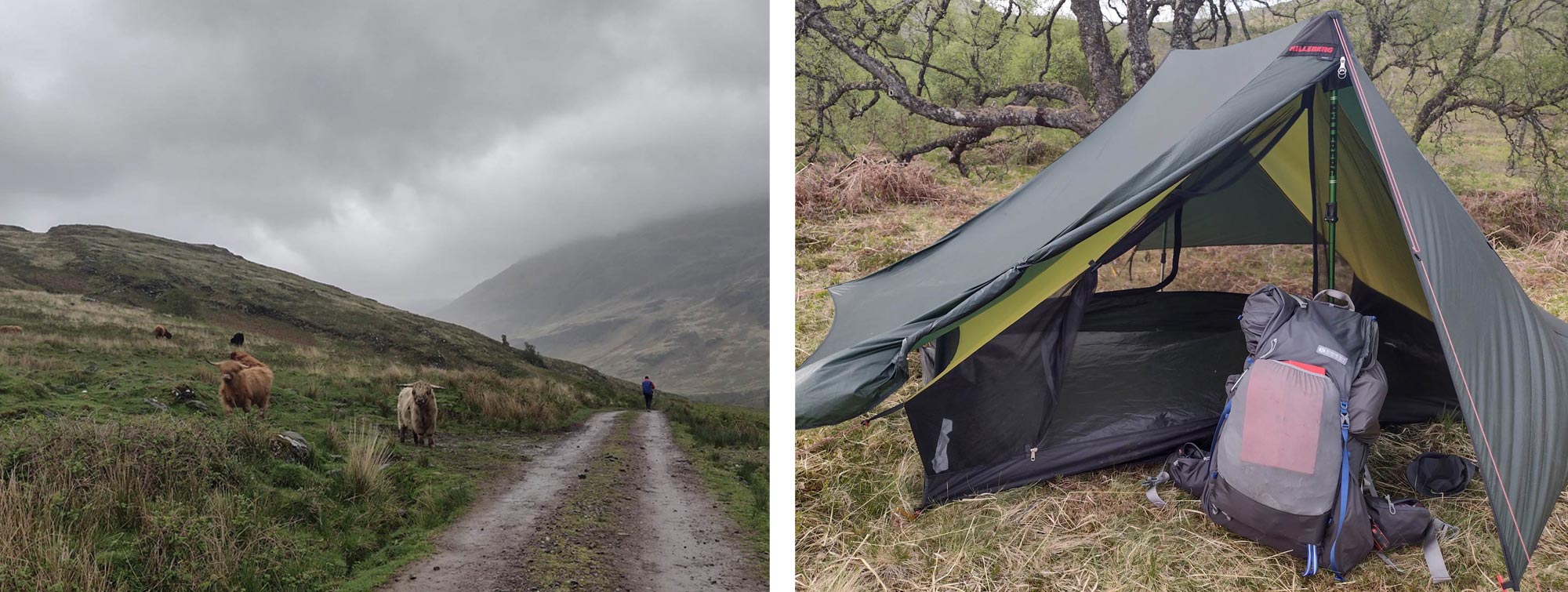
Day 2 Kinlock Hourn to Loch Poulary: 16 miles
Today's walking involved one steep climb at the beginning of the day, then relatively flat walking. Firstly, down one valley and then up another. I set off early. I was packed and on the trail by 7.30am. Mercifully, it had stopped raining, by no means was the sun shining, but at least it wasn't raining.
The first part of today’s journey had me follow a small stream, that fell in spectacular waterfalls, up to its source, and up and over Core Sgoireadail; a height of about 1500 feet. Then, descending steeply into the valley of the river Quoich. The path was barely a foot wide and, as I had come to expect, was constantly flowing with water. I made good going all day and had soon passed my original planned camping spot. As I had managed to press on the day before, I knew I still had many more miles in me. So, I headed up the Easter Glen until I made my way to my first real river crossing, the river Loyne. Here, there was nothing for it but to roll my trousers up the best I could and wade across. Well and truly drenched, I pressed on through a decimated plantation and ascended Mam Na Seilg. Not a remarkably high spot, but I was treated to a beautiful view. It was the first time the landscape had opened up before me, the sun was shining and I felt like I was on a real adventure. I quickly descended, making good progress, and found a small patch of trees near Lock Poulary. I decided this would be a fine wild camping spot and bedded down for the night.
Day 3 Lock Poulary to Faichemard campsite: 12 miles
A relatively short day today, but you can be the ones to tell my feet that.
The first half of the day was, unsurprisingly, incredibly wet. The path I had chosen was through an old plantation, and at first, the path was hard to find. Only by carefully picking my way between the thousands of bleached white tree stumps was I finally able to discern, what, at one time, must have been a path. It was little more than a bog. The going was incredibly slow and arduous. The path, which I will remind you I chose and so had no one else to blame, often passed through idyllic mossy glens. These glens were little more than huge sponges and the going was treacherous. I slogged on to my midway point Garrygualach, a small farmstead and I'm happy to report the trail became a huge forestry track, which, by some miracle, was dry. My pace quickened dramatically. This was good as I can attest that the forest of Glen Garry seems never-ending. It was a real slog and by the end of the day my feet and Achilles heel were throbbing.
I finally made my way, to Faichemard campsite. This is a truly splendid place with fantastic views over some seriously impressive landscapes. Mercifully, it had a shower and a bin, so I could finally dump 3 days' worth of rubbish, lightening my load somewhat. It was also here I finally met my first TGO’ers since leaving the boat, a wonderful couple, an Australian man and a French lady, who, I am pleased to say, were some of the best people I met on my challenge. It was talking to them that I became aware of “the 3 questions”, soon a fourth would be added, but not for a few days. The three questions are asked to, and by, every challenger you meet along your way; “Where did you start?”, ”Where are you finishing?” and “How many challenges have you completed?”. These questions almost become your mantra.
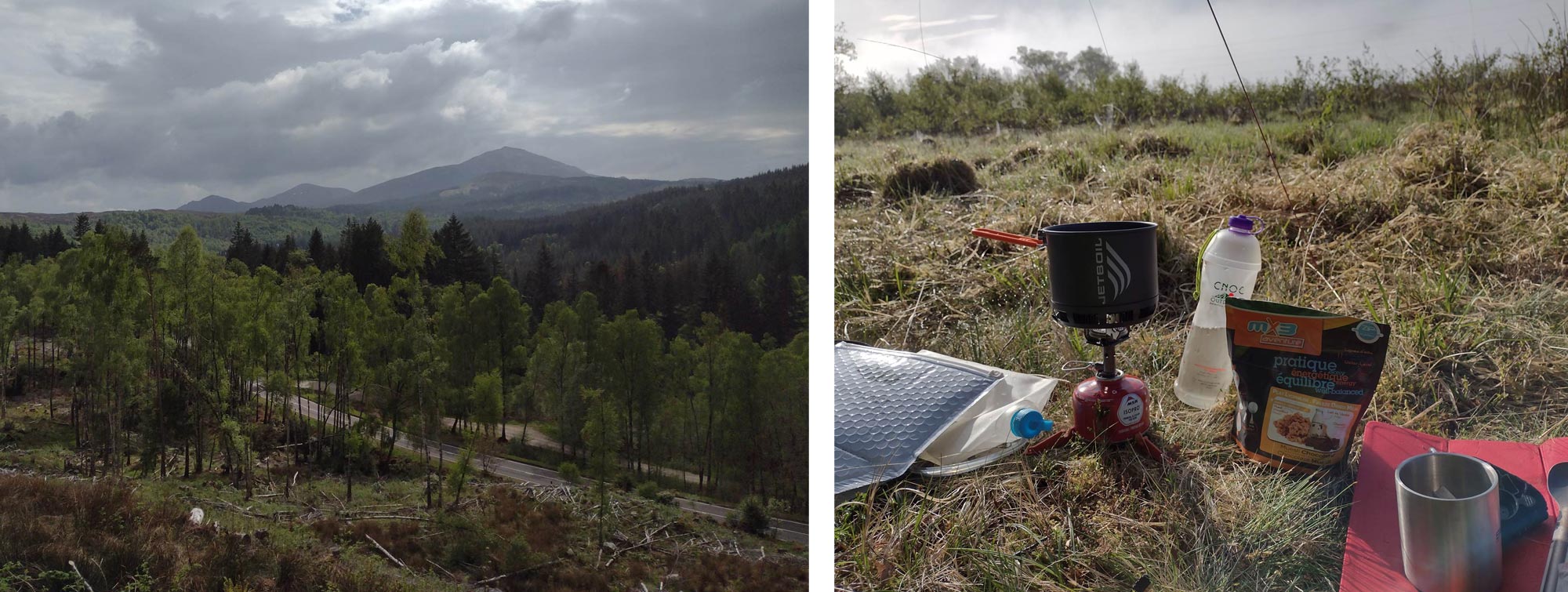
Day 4 Faichemard campsite to Melgarve Bothy: 20 miles.
Up bright and early, I followed the Great Glen way along the Caledonian canal. This made for easy-going underfoot, for which I was incredibly grateful. My Achilles heel, which had started to ache the day before, showed no sign of easing after a night's rest. By mid-morning, I had covered almost 10 miles and found myself in Fort Augustus staring out over loch Ness. I resupplied in some shops, the first I’d seen since leaving Fort William. I treated myself to a few of the things you fantasize about on the trail, or at least I do, fresh fruit and fizzy pop. My Achilles had now swollen considerably so, without any success, I looked around for an outdoor shop with the hope of finding somewhere I could buy some new shoes. Luck not being on my side, I was forced to press on and for the first and only time on my Challenge, I thought I may not make it to the end.
It’s remarkable what good company and good conversation can get you through. Coming out along the road from Fort Augustus I met a fellow TGO’er, a doctor, who had gone back into practice thanks to the pandemic. We asked each other the 3 questions, and, we both shared stories from our experiences working for the NHS. I had worked in an A&E department for most of the pandemic and we had plenty to rant about.
Together we made our way to Blackburn Bothie and had lunch. We both got the stoves out and fortified ourselves with hot food, we were definitely going to need it. We joined General Wade’s military road. This is a network of military roads constructed in the Scottish Highlands during the middle part of the 18th century. This led us over Corrieyairack Pass (2500 feet), a challenge in any weather, but we were constantly being buffeted by 40 - 50 mph winds. One of the main reasons you do this crossing, or any coast to coast of Britain really, from west to east, is to keep the prevailing westerly winds at your back, Wainwright himself also knew this. No one seemed to have informed the Scottish weather of this and the strong easterly wind was constantly in our face. Thankfully, once we had made our way over the pass, the wind died down somewhat and we made our way to Melgarve Bothy. There we were joined by only 2 other people. We soon had a fire lit and our clothes, boots, and socks, which had been damp for 4 days, finally dried out. We hung our food bags up out of reach of the mice and whiled away a pleasant evening watching a herd of stags. We bedded down, 1 to a room, and slept soundly despite the mice.
Day 5 Melgarve Bothie to Newtonmoor. 20 miles.
Today was an incredibly early start, I was up and on the trail by 6 am. My Doctor friend was already gone, our chosen paths were taking us in different directions. The novelty of not having to pack my tent up was definitely a deciding factor for my early start. I had studied my map and knew today was a long, arduous day of flat road walking, not every hiker’s dream. This was especially true because of my swollen heel, which showed no signs of abating. I wasn’t in the highest of spirits.
Bothies are often great places to find useful gear, discarded but not quite empty gas canisters, tinned food people don’t want to carry anymore, and the occasional lost item of clothing. In this bothie, some either careless or incredibly generous person had left a pair of Crocs (foam clogs). These were a lifesaver. They didn’t irritate my heel and would be brilliant for road walking. A long way from ideal, but they would get the job done. I pre-emptively taped my feet up with some plasters and I was on my way soon making fantastic time.
Reinvigorated to no longer be in pain, the walking was fantastic. Through the beautiful open country, into small woods, and along the River Spey, I soon found myself in Laggan, a pretty little village. Sadly, the small café was shut. This was a disappointment for me, but the owner must have been kicking himself as about 30 fellow TGO’ers were all behind me, all of whom, I’m sure, would have gladly handed over fistfuls of cash for bacon buns and hot coffee with real milk. I chatted to a fellow TGO’er, who was local to the area, who informed me the route I had chosen would get me to my destination, but it was along a very busy forestry road. She pointed out an alternative and assured me that I could get lunch at Catledge.
I set off once again and indeed did get lunch in Catledge. The road walking was pleasant from here on out, it was a lovely day and, unexpectedly, I found myself staring at the “Centre of Scotland stone” just north of Dalwhinnie. As I was doing a coast-to-coast walk I took comfort from the fact that this must mean I was about halfway through my journey.
I soon found myself on the road leading into Newtonmoor, my destination for the night. I had no notion of where I was staying, but I made for the Hostel (not open as a hostel during the challenge, as this is mission control). Here, as well as picking up the care package my wonderful girlfriend had sent me (a resupply of my dwindling dehydrated meals, a fresh gas canister, and a photo of the cat), I met Ali, one of the event organisers. We had tea and cakes and she very kindly offered me a spot on her lawn to pitch my tent for the night. I was soon upgraded to a room with a real bed and a hot shower. It felt like staying in Michael Eaves' house during Glastonbury festival! After a quick shower, I made my way to the pub and had my first beer since I left fort William. I met up with a German friend I had met in the Bothie the previous night and we had dinner together (I still owe you dinner if you are reading this).
I made my way back to Ali’s beautiful house by 8 pm, not wanting to impose myself. I planned for an early night and to be up and off at the crack of dawn… at 1 am, Ali, her husband Adrian and I had given 3 bottles of whisky a good thrashing. The world had been put to rights, and our friendships had been well and truly cemented. Fabulous people, brilliant conversationalists, and keepers of fine malts. I was blessed to have been invited in, it was one of the highlights of the trip.
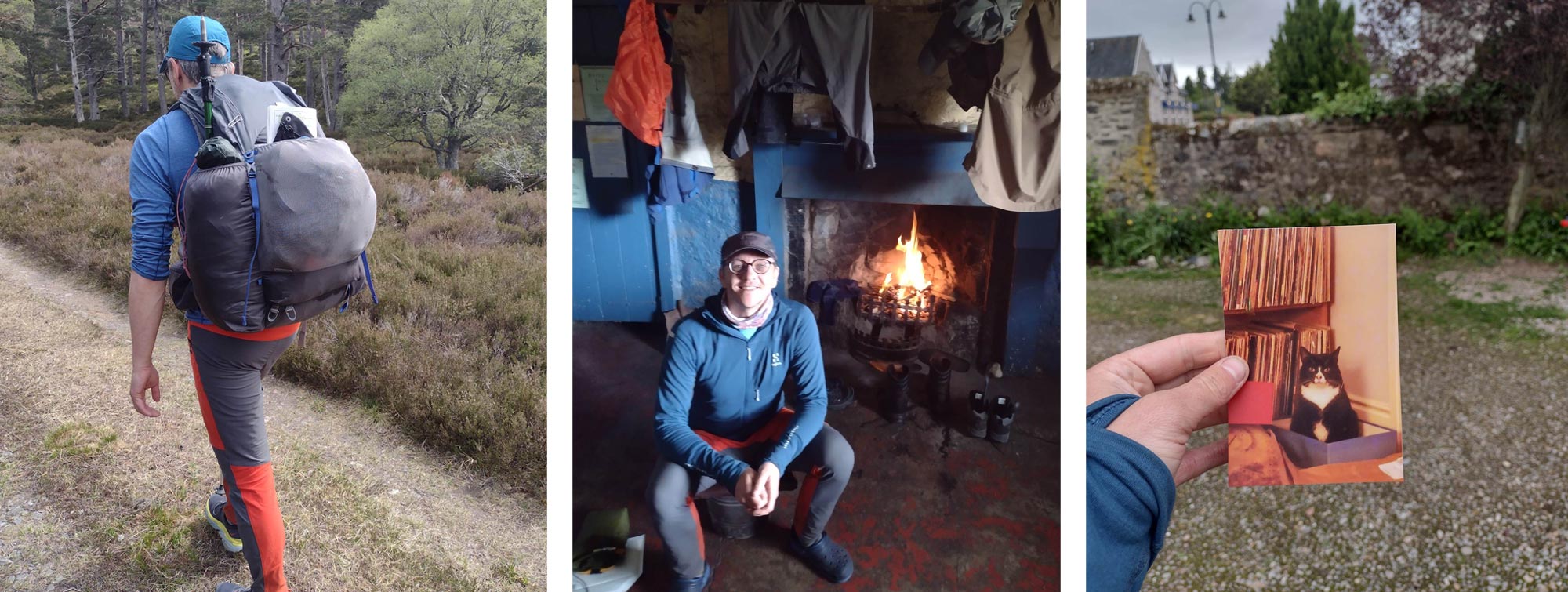
Day 6 Newtonmoor to Ruigh Aiteachain Bothie: 15 miles
Today I had a plan, a plan, and a hangover. My good friend Colin, who lives locally, had kindly offered to take me up the road to Aviemore to pick up some new Trail runners sent on by work (a pair of Hoka One One Challenger 6 GTXs) and take me for a bacon bun, then drop me back off at the hostel. The world is a much better place because of people like Colin.
At 10.30 am I was back on the trail, fortified by bacon and coffee, raring to give my new shoes a spin. I made my way to Kingussie and followed the Speyside way up into the Cairngorms. It was here I met up with 3 Americans, wonderful people, with whom I instantly formed a real friendship. One of their party had, sadly, become injured and had to drop out, and another had gone on to tackle some of the more challenging Munros the Cairngorms had to offer. It was a real treat getting to chat with some new, like-minded people, who were a wealth of information on some of the great American trails. One of them had even completed the Appalachian Trail. We joined forces and I’m happy to say I would walk all the way to the sea with them.
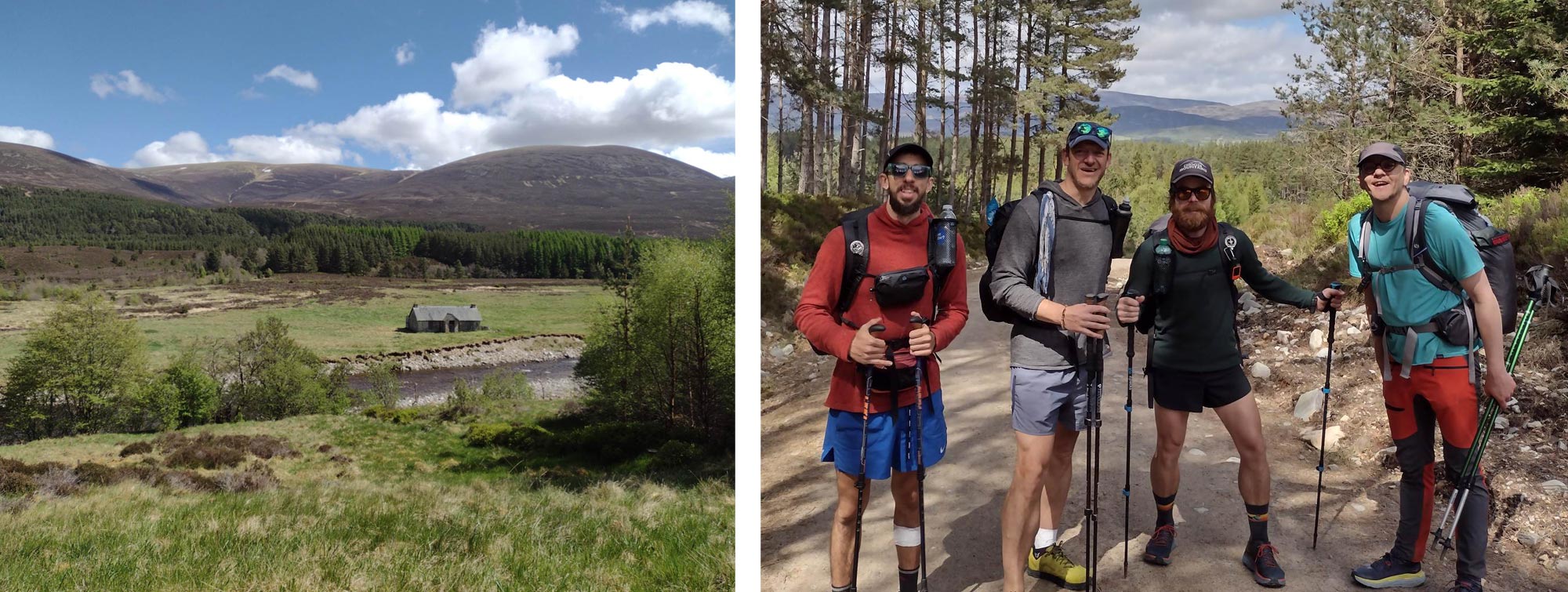
The rest of the day's walking was nothing short of spectacular. Through beautiful pine woods, open meadows, across idyllic mountain streams, and past dry stone-walled ruins. The path was interesting, with some scrambles as well as some rivers to ford. The sun, for the first time, was hot and we made fantastic time, bolstered by conversation and comradeship.
Ruighe-aiteachain bothie (pronounced Roo-ee Etchachan, but everyone seems to call it Feshie bothy) is one of the greatest places on earth. Recently renovated by Anders Povlsen of Wildland Limited, it is overseen by the retired custodian of the bothy, Lindsay. A true gentleman in every sense of the word. His mission in life it seems is to get hikers as drunk as he possibly can, whilst providing food, and charming company. He is succeeding at his mission in splendid fashion. A bottle of wine 15 miles from civilisation is a welcome treat; a cooked chicken dinner, several bottles of wine, a bottle of whisky, and a baileys nightcap, is something else entirely. I was told there was a storm that night, but I have little memory of it.
It was in the bothie I became aware of “the 4th question”, “how are you holding up?” this was always followed by the person asking inspecting your legs to see if they were held together by duct tape. The bothie was also doubling as a field hospital. Every other person seemed to be in some form of distress; infected feet, swollen ankles, bandages, and pain killers were being applied to everyone it seemed. I was pleased to say since my change of footwear I was holding up well.
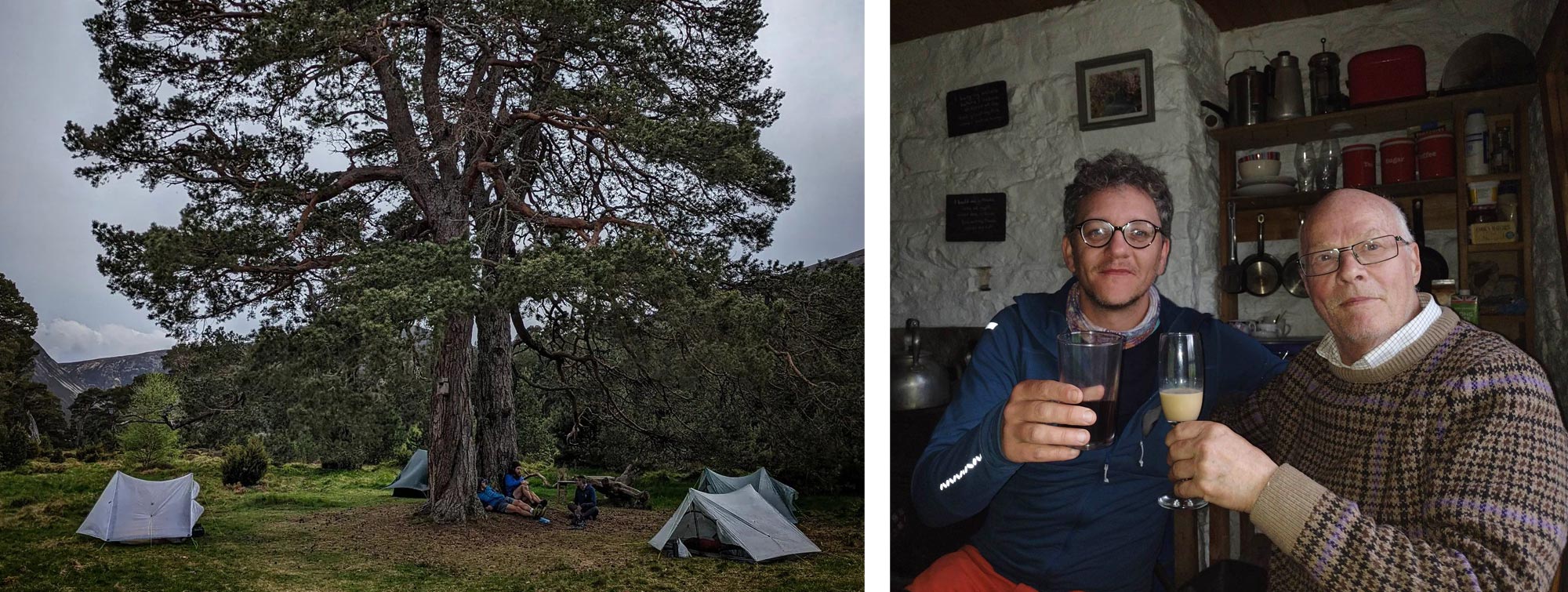
Day 7 Ruigh Aiteachain Bothie to Braemar: 20 miles
We stayed in the tents that night, the bothie being too crowded and stuffy, but we made our way back in for breakfast. Lindsay was already up warming croissants in a bread bin and hot coffee was brewing in the pot. After breakfast, we thanked Lindsay for his hospitality.
“Can we give you some money for the wine and food?”
“No, I’m considerably more wealthy than you are”
That was good enough for me!
Today was another fabulous day of walking. The sun was still shining and I even stopped to put on some sun cream. We made our way deeper into the Cairngorms. We followed the River Feshie up the Glenn before turning east and following the Goldie Burn, a tributary of the River Dee. The River Dee would be our constant companion from here on out. We would follow it from its source all the way to Aberdeen and the north sea.
Walking through stunning mountains, along the beautiful rivers was another of the finest days of walking I’ve ever experienced. We were forced to wade across a few of the tributaries of the River Dee and once again got soaked. Thankfully, the trail runners dried much quicker than boots. Eventually, we made our way to Mar Lodge, a sporting lodge built for the use of the Duke and Duchess of Fife. Here they had set up a tea room for the TGO challengers. Once again, I met up with the couple I had met at Faichemard campsite. It was good to see them again and we all set out to Braemar together. After a gruelling bit of road walking on already sore feet, we eventually arrived, meeting up with the rest of the American party, who had both sadly dropped out due to injury. We were joined by more hikers, two phenomenal Swedish chaps, who we had spoken to previously. We all went for dinner and I’ve never seen a publican so put out by the thought of 15 or so people happily forking over money for food and beer. We all (the Americans and I) stayed in a cabin for the night and decided that tomorrow we would have a rest day.
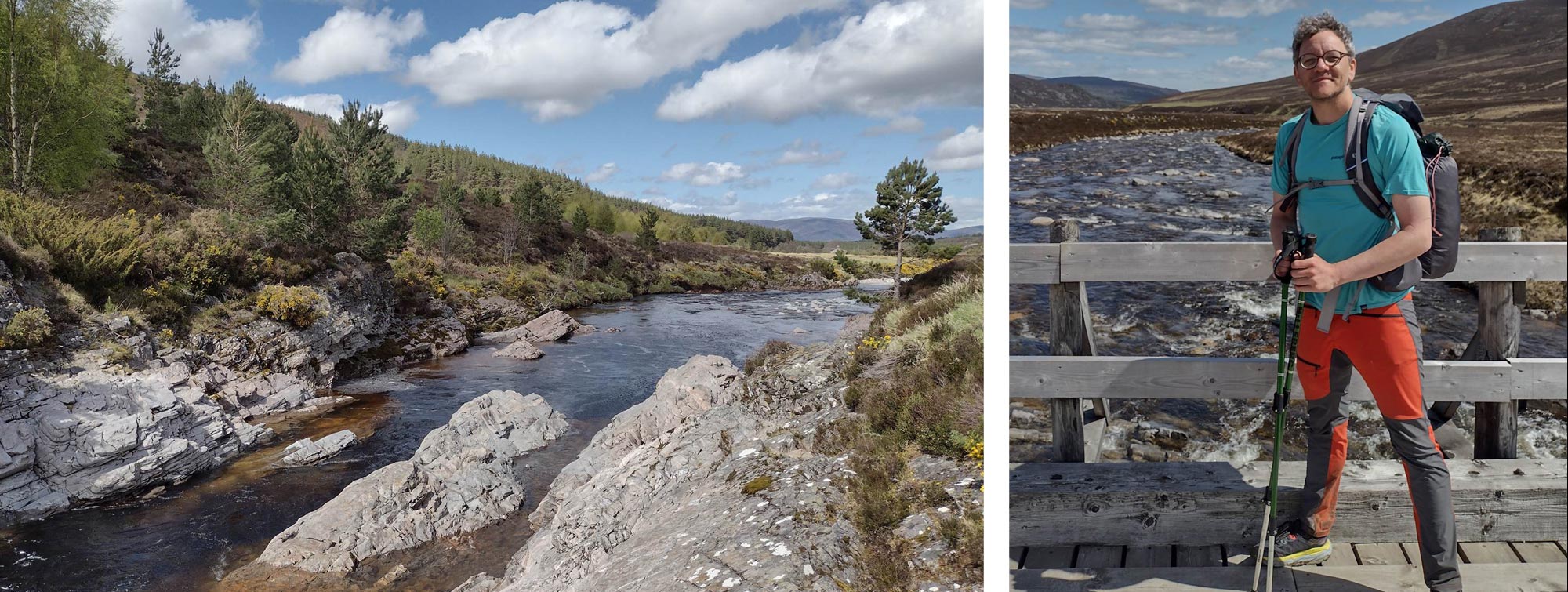
Day 8 rest day: 0 miles
We had a splendid rest day. We saw an original Picasso, saw the house of Robert Louis Stephenson who wrote Treasure Island, witnessed a bagpiper-led wedding procession, and ate from a patisserie so fabulous, that the cakes looked like they belonged in a Wes Anderson film. All that before heading back to the cabin and cooking a huge dinner for us all (6 Americans, 2 swedes, and myself).
Day 9 Breamar to Ballater: 17 miles
With the Cairngorms now behind us, we felt like the end was in sight. We were about 60 or so miles from the sea and the going would be fairly flat if a little hard-going underfoot. A lot of road walking would be involved. The 3 Americans, one of the swedes (he had suffered a sprained ankle on day 2 and would walk the flatter route with us, whilst his walking partner would continue on and complete their original route) and I set off. But first, we stopped for a full English breakfast (I had to explain what black pudding was, but dutifully waited till they had eaten it).
The going was good, and we made splendid time. The path wound its way through pine forest that became a lot more regal, literally, as we made our way to Balmoral Castle. We stopped and had lunch here before heading back on to the trail, passing quaint little villages and going through more imposing woodland. After several miles of road walking, we eventually made it to Ballater, where we stayed above a pub, got Chinese take-away, and bedded down for the night.
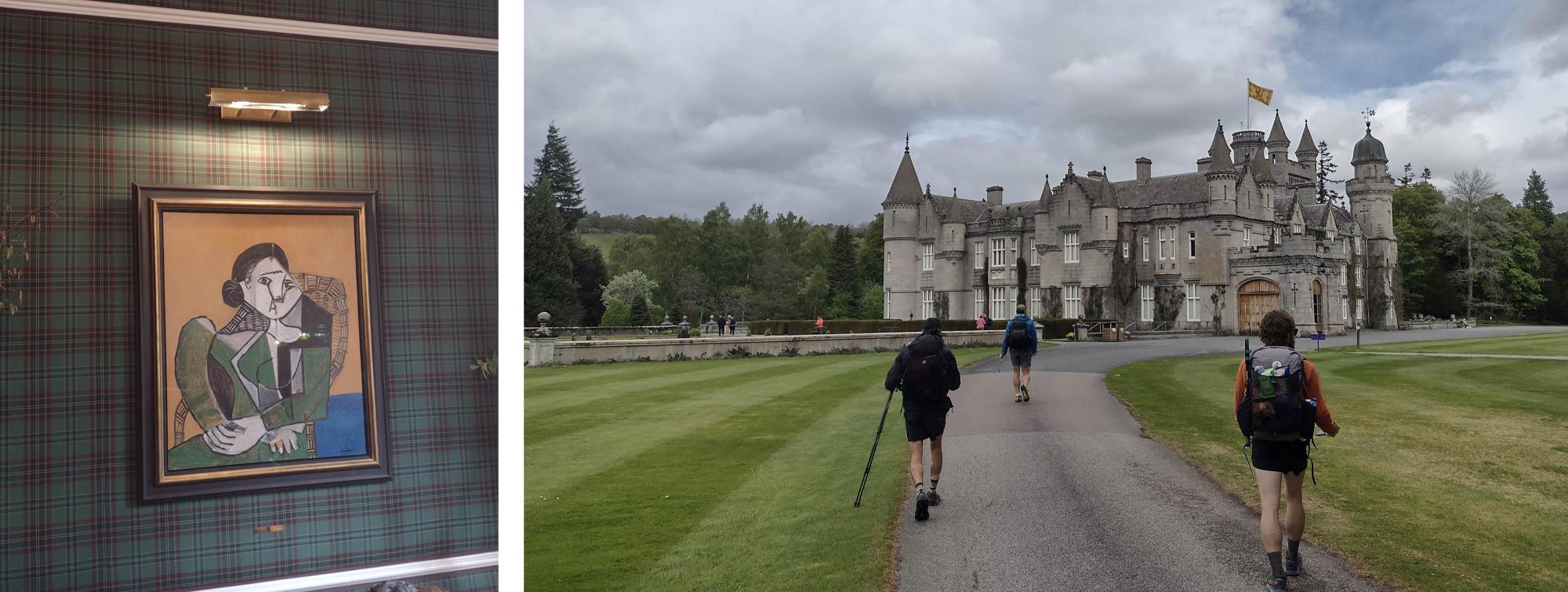
Day 10 Ballater to Banchory: 26 miles
Wanting an easy last day (only 17 miles) we decided that today we would push as far as we could. We decided to make for Banchory 26 miles away, a big ask but a doable one. It was here that we join the Deesside way, which followed an old railway line that I suspect was used to transport queen Victoria to Balmoral castle. It was easy going in terms of walking, but not very challenging. The scenery was lovely as we walked through the Muir of Dinnet, but by the time we got to Aboyne, we were feeling the fatigue of so much road walking. Here we attempted to find somewhere to eat, this being a Sunday proved quite a challenge. It wasn’t until a friendly local took pity on us saying “Wow! you guys look like you could do with a coffee” that we were eventually pointed in the direction of a small café that was actually open.
With another 14 or so miles to do, we begrudgingly hefted our packs onto our backs and set off once again. Following the road, we eventually made our way to the bridge of Potarch and then into the Blackhall forest, which I can assure you never seemed to end. Somewhat dejected, we eventually made it into Banchory, we met up with the injured Americans and we decided to spend our final night wild camping. We walked to a supermarket where we picked up some supplies to get us through the next day and retired to our tents.
You may be able to tell from my tone, that the Deesside way, although flat and relatively straight is rather dull. As I planned the route I only have myself to blame, I suppose. Don’t think for an instant that I wasn’t enjoying myself, the company and conversation could have got me through much worse, but it's something I will definitely take into account for my next challenge. So, here’s a tip for anyone planning on doing the T.G.O, the Deesside way is a beautiful path with lots of nice places to stop and get a coffee, and plenty of towns to resupply. However, I think I would have rather walked for a day or two more, not only to challenge myself but also to make the trail more interesting.
Day 11 Banchory to Aberdeen: 17 miles
Our final day started slow, we were up and gone by 7 am, but the long day the day before, and general fatigue meant outgoing was sluggish. We walked the 7 or so miles to Peterculter where we stopped for lunch. It had been steadily raining, the first we had seen for maybe a week and we were glad to stop. The place we stopped for lunch was heaving, we were ushered into a separate room away from the clean patrons, but we didn’t object. We were served strong coffee, food, and cakes. We set off again, the warm sun now overhead which prompted a complete change in attitude. We could have walked another 20 miles and we wouldn’t have complained. Good food, a change in weather, and the end in sight all made for excellent walking and high spirits.
It’s amazing how quickly the path went from idyllic countryside to metropolis. The path ended in a park then suddenly we were crossing 4-lane main roads. We crossed the river Dee one last time and found ourselves in the harbour of Aberdeen with the smell of smoked fish in the air. We walked till we found a small beach surrounded by huge ships, and made out way down to the sea. We dipped our feet in the ocean and we were done, our crossing was complete, we had walked from one coast to the other. We took some photos, but the weather was turning for the worse, so we booked a taxi and headed for the train station.
We had completed our crossing, but we had one more thing to do. We boarded a train going south and made for Montrose, the official end point and mission control. I think we all drifted off on the train at some point and arrived all a little dazed. We found our way to the hotel and signed the registrar to say we had completed The Great Outdoor Challenge. Everyone was very pleased to see us, there was a very joyous atmosphere in the room. We collected our t-shirts and chatted to the other challengers, some of whom we had seen on our crossing but others were new to us. The “4 Questions” was asked by all to all, and soon everyone was acquainted. That night we all had a meal in the hotel, as is tradition. And that was it, that was the TGO, a phenomenal experience, one I will certainly be back to do again.
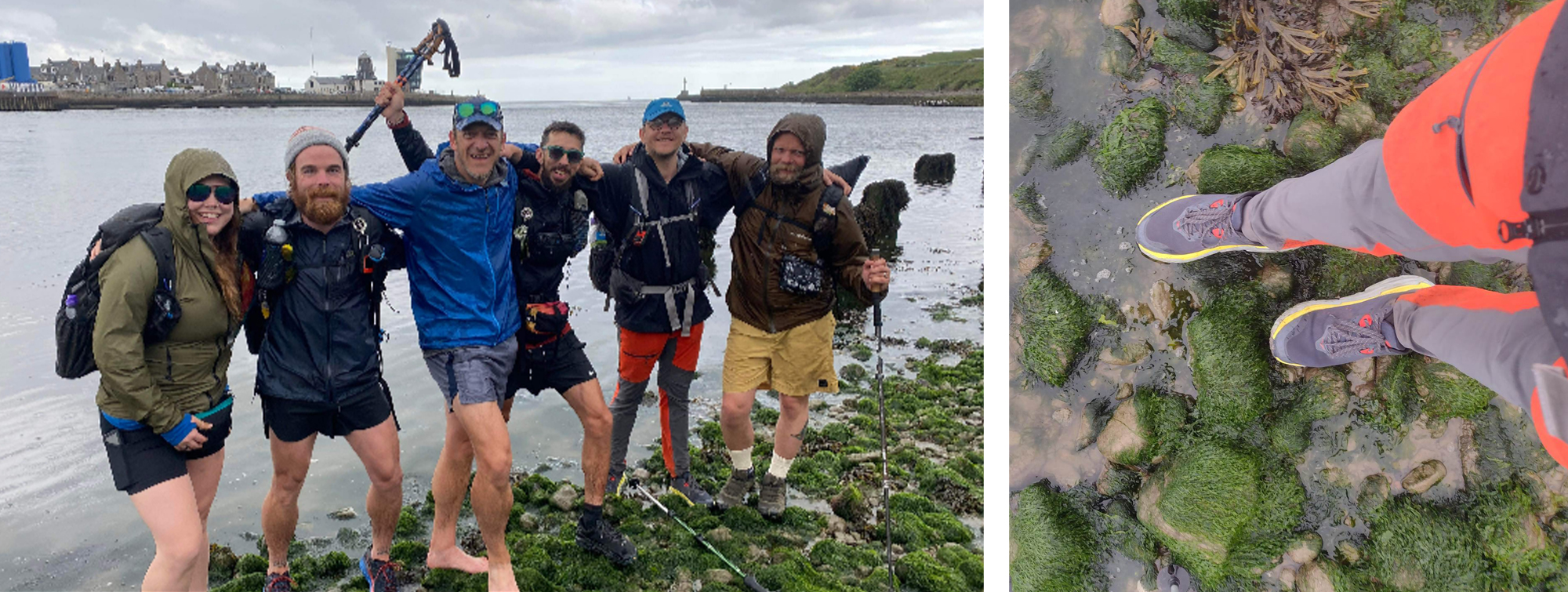
TGO Challenge 2022 - Getting There

|
||
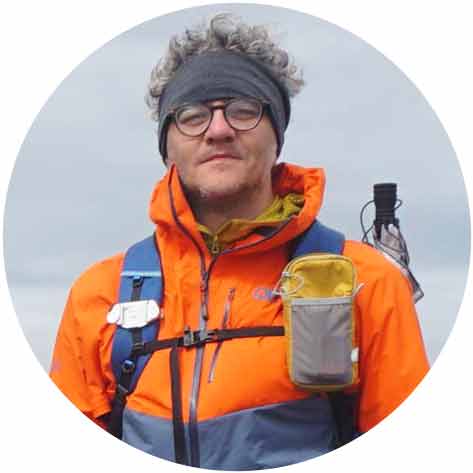 |
||
|
Andy Neil |
||
|
Andy has been a keen long-distance hiker and wild camping enthusiast since he completed the Cleveland Way in 2015. Since then, he has walked thousands of trail miles all over the UK and is an active member of the Wild Camping UK community, being an admin of the largest wild camping community on Facebook. He strongly advocates for responsible wild camping and believes it is important to leave no trace when camping in the wilderness. He joined the UOG team in 2021 and works as a website developer and content creator. |
||
